The undergraduate programs introduce art history through a geographically and temporally diverse range of works, while giving students the flexibility to focus on their particular interests.
(11 full-course equivalent credits)
The art history specialist program is designed to give students an in-depth, focused understanding of the discipline and to prepare them for graduate study. Students must take at least nine FAH credits, fulfilling the following distribution requirements, along with at least two credits of language courses (see below):
| First Year |
|
| Higher Years |
|
Language Requirements: The Art History Specialist program requires two credits of language courses. One of these credits must be in German, French, or Italian, although students may request to substitute another language in which there is substantial art historical scholarship in their area of specialization (such as Dutch, Russian, or Chinese).
(6 full-course equivalent credits)
The art history major program offers a concentrated education in art history that can be combined with studies in other fields. It can serve as preparation for grauate study or for careers in the arts. Students must take at least six FAH credits, fulfilling the following distribution requirements:
| First Year |
|
| Higher Years |
|
While language courses are not a formal requirement for the art history major program, linguistic competence is an essential foundation for graduate study in the discipline. Students contemplating higher-level studies in art history are strongly advised to acquire a reading knowledge of German, French, or Italian by the end of their third year. Students who specialize in ancient or medieval art are also advised to study Greek or Latin. Students pursuing Asian art history are encouraged to learn, Chinese, Japanese, or another Asian language.
(4 full-courses equivalent credits)
The art history minor program provides an introductin to art history, enabling students to augment their studies in other fields and diversify their academic portfolio. Students must take at least four FAH credits, fulfilling the following distribution requirements:
| First Year |
|
| Higher Years |
|
FAH Course Groups
Students in all FAH degree programs are required to take either FAH101H1 or FAH102H1. These two courses cover similar ground. Each serves as a broad introduction to art history and cultivates skills that can be applied in upper-level courses. FAH101H1 is a chronological survery of major periods and monuments in the history of art and architecture, emphasizing works that are representative of current upper-level course offerings in the Department of Art History. FAH102H1 introduces the discipline of art history by engaging with a broad range of works and theoretical texts through a thematic structure that varies from year to year. Students are encouraged to take one of these courses early in their progress toward an FAH degree.
200-level course are comprehensive surverys that introduce works from specific chronological periods and regions. They serve as gateways to more advanced courses at the 300 and 400 levels.
| Group | Periods Represented | FAH Courses Numbered |
|---|---|---|
| A | Ancient, Medieval | 200–29, 300–29, 400–29 |
| B | Early Modern, Modern–Contemporary–Canadian | 230–59, 330–59, 430–59 |
| C | Asian | 260–69, 360–69, 460–69 |
| D | History of Architecture | 270–79, 370–79, 470–79, plus 265, 309, 328, 415, 421 |
| O | Other | 380–99, 480–99 |
Courses used to satisfy one group requirement cannot be counted toward another group requirement. FAH101H1 and FAH102H1 do not satisfy the requirement for any group.
BR5 and Quantitative Reasoning Courses
Quantitative Reasoning is a required learning outcome of all Arts & Science major and specialist programs. FAH338H1 includes a quantitative reasoning component and is the preferred course for FAH majors and specialists to meet this requirement. For students unable to complete FAH338H1, the requirement can be met with a BR5 course; some examples are AST201H1, CHM209H1, CSC104H1, ESS103H1, ESS105H1, HIS393H1, JUM205H1, PHY100H1, PHY202H1, PHY207H1, STA220H1, ANT200Y1, ARH305H1, CIN230H1, WDW235H1, or WDW236H1.
Interdisciplinary Studies
Many other disciplines are invaluable to art historians because they provide a context for our studies, or support such studies in other ways. These include history, literature, religion, urban studies, and some college programs, e.g. Anthropology, Classics, English, Geography (especially cultural, historical and urban geography), History, Innis College, Philosophy, Religion, St Michael’s College, Victoria College, etc. Note that courses in classical mythology and Christian ritual and belief are a useful complement to the study of most periods of Western Art. Certain courses in cognate disciplines are recognized for credit as if they were FAH courses, e.g. East Asian Studies, Near and Middle Eastern Civilizations.
See the Related Disciplines and Courses webpage for specific courses


